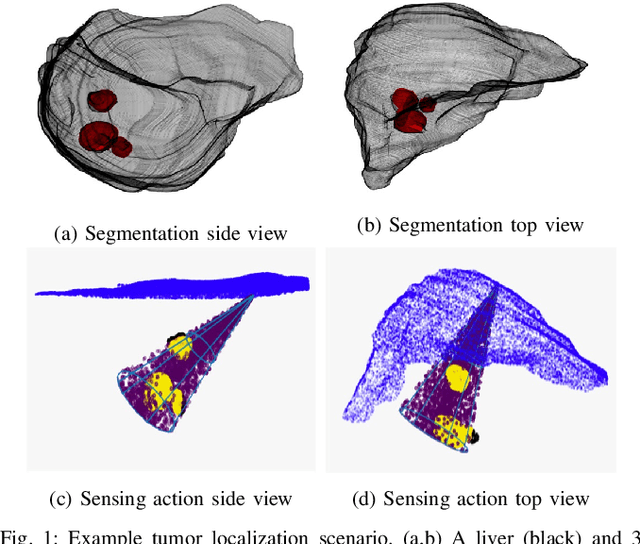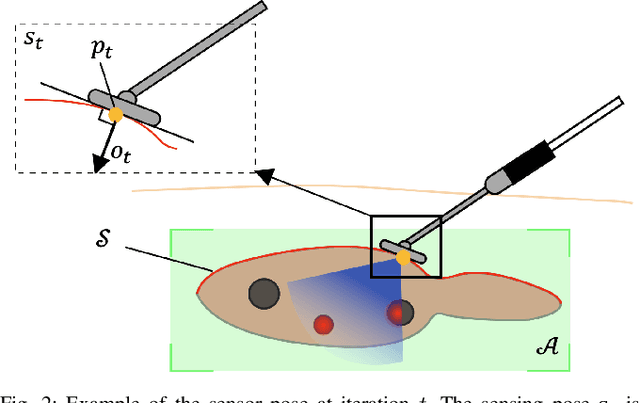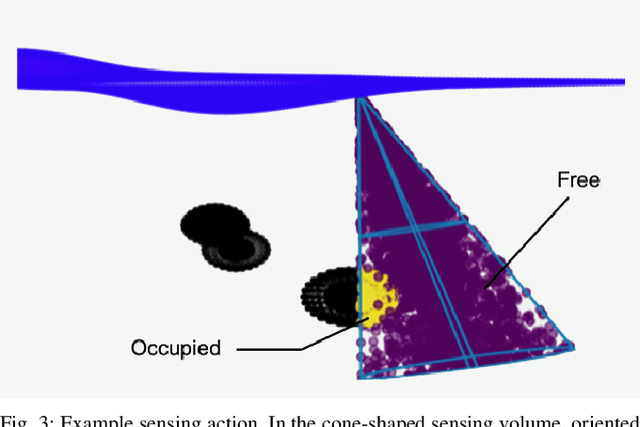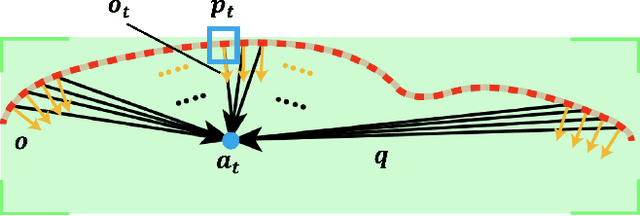Planning Sensing Sequences for Subsurface 3D Tumor Mapping
Paper and Code
Oct 12, 2021



Surgical automation has the potential to enable increased precision and reduce the per-patient workload of overburdened human surgeons. An effective automation system must be able to sense and map subsurface anatomy, such as tumors, efficiently and accurately. In this work, we present a method that plans a sequence of sensing actions to map the 3D geometry of subsurface tumors. We leverage a sequential Bayesian Hilbert map to create a 3D probabilistic occupancy model that represents the likelihood that any given point in the anatomy is occupied by a tumor, conditioned on sensor readings. We iteratively update the map, utilizing Bayesian optimization to determine sensing poses that explore unsensed regions of anatomy and exploit the knowledge gained by previous sensing actions. We demonstrate our method's efficiency and accuracy in three anatomical scenarios including a liver tumor scenario generated from a real patient's CT scan. The results show that our proposed method significantly outperforms comparison methods in terms of efficiency while detecting subsurface tumors with high accuracy.
 Add to Chrome
Add to Chrome Add to Firefox
Add to Firefox Add to Edge
Add to Edge